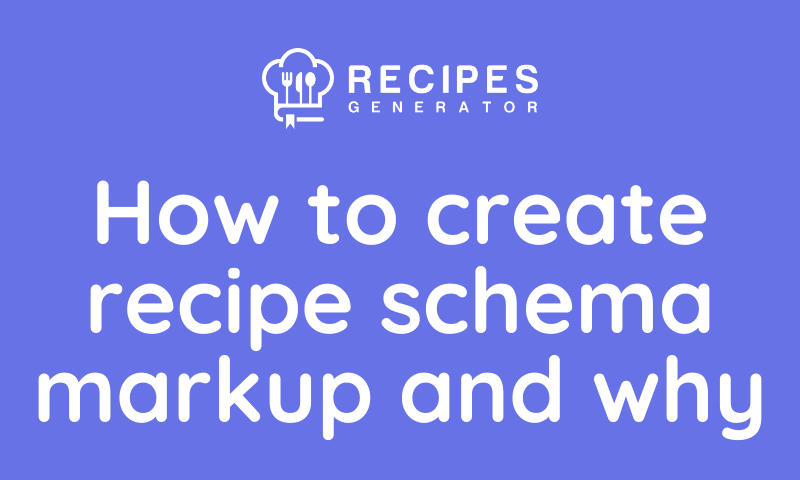Food bloggers and nutritionists are constantly on the hunt for ways to boost their website traffic and make their audience happy.
There are many ways to do this but the best formula consists of these 3 steps:
- Make sure your content is unique and interesting. This is the most important piece so always keep it in mind.
- Make sure your content is properly optimized for search engines.
- Promote your content on social media.
This article's focus will be on the second point. We will talk about the most popular option on how to ensure your content is properly optimized for search engines; recipe schema markup.
What is Recipe Schema Markup?
To put it in simple terms, recipe schema markup is a special code that you add to your food website that helps you gain traction in the search engines – it’s sometimes referred to as structured data.
Sometimes understanding the concept of recipe schema markup isn’t easy, so let me explain it with an example. Let’s say you are posting a meatball recipe and you have the word ‘meatball’ in your description. Google isn’t as smart as one might think, and they can either show results of your meatball recipe or the ever-so-famous movie, Cloudy With a Chance of Meatballs.
Adding recipe schema markup into your website will allow Google to properly show your recipe if they are looking for meatball recipes, not the 2009 movie.
When you add schema markup into your blog post or your online recipe, Google will now know exactly what you are referencing and it can properly show it to people looking for what you’re offering. See how that works?
Why is Recipe Schema Important?
Recipe schema markup is extremely important if you want your recipe to reach the millions of hungry people looking for your recipe right now. The goal of Google is to show people the highest quality content of what they are looking for, so they don’t have to spend hours looking through different websites and pages.
Using schema markup increases your chances of being seen high up in the search results, as well as increasing your click-through rates. If people are looking for an easy meatball recipe that takes under 30 minutes to make, and that’s what your recipe is, you’ll want to put that into your schema markup.
While adding schema markup to your website doesn’t guarantee the search engine will show your content, it definitely increases your chances of being seen in the algorithm. When a user looks for something, clicks on your page and stays on your page, that data is then sent to Google’s hub and signals that they made a good match.
Now that you know what schema markup is and why it’s important, you need to learn how to create it for your food website.
How to Create Recipe Schema markup?
Creating schema markup isn’t easy – especially if you aren’t familiar with coding. But have no fear, Recipes Generator is here to save the day!
These are the guidelines for Google recipe schema. Do you want to read all of that? Probably not! Do what you do best and leave boring and tedious tasks to our plugin!
Creating recipe schema markup with our tool consists of three easy steps:
- Add recipe information: You simply name the recipe, include an image, add in the ingredients and instructions, include the cooking times, and anything else you need for your specific recipe.
- Customize your recipe card: With 9 pre-made recipe card templates to choose from when designing your recipe card, Recipe Generator makes it super easy to create a professional-looking recipe card!
- Copy and paste your code: Now that your recipe card has been created and so has your code, it’s just a simple copy and pasting the code onto your blog post about that recipe! How easy is that?!
There are a few online tools for creating recipe schema markup but what sets Recipes Generator apart is the fact that it isn't just a recipe schema generator. Besides the recipe schema, you will also get a bunch of other goodies:
- Stunning, printable, and SEO optimized recipe cards
- Support for JSON-LD schema (Google's recommendation)
- Pinterest rich pins and Pin-it button
- Nutrition facts generator
- Us to Metric conversion
- Star ratings and reviews
- Adjustable servings
- Fahrenheit to/from Celsius conversion
- Instagram Call-to-action for boosting engagement
- Much more!
Our recipe plugin is available on all popular platforms including Squarespace, Wix, Blogger, Weebly, Kajabi, Shopify, and more.
Conclusion
Now that you understand the importance of recipe schema markup, are you ready to add it to your recipes and boost your website?
